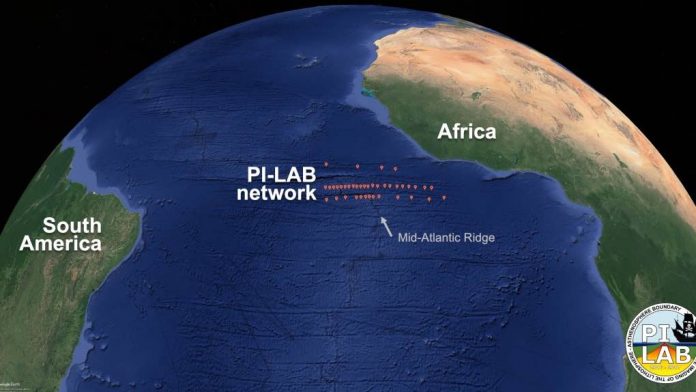A new research has found that an upsurge of matter from beneath the Earth’s crust under the Atlantic Ocean may be pushing the continents of North and South America farther apart from Europe and Africa.
Scientists out of the University of Southampton have found evidence of a “mantle upwelling” from depths of more than 600 kilometres beneath the Mid-Atlantic ridge, causing the distance between continents to increase.
“Sinking slabs and rising plumes are generally accepted as locations of transfer, whereas mid-ocean ridges are not typically assumed to have a role,” the team led by seismologist Matthew Agius from the University of Southampton in the UK explains in the new paper.
“However, tight constraints from in situ measurements at ridges have proved to be challenging,” it continues.
‘Material transfer’ from lower to upper mantle
Seismic recordings from the fleet of undersea robots, called seismometers, monitored the flow of material in the mantle transition zone between the upper and lower mantle.
This allowed the team to image material transfer at depths of up to 660 kilometers (410 miles) below the surface.
The data suggest that chemical material from the lower mantle rises upwards, something that was previously only thought to occur in the shallow depths of the Mid-Atlantic Ridge.
“The observations imply material transfer from the lower to the upper mantle – either continuous or punctuated – that is linked to the Mid-Atlantic Ridge,” the researchers explain.
“Given the length and longevity of the mid-ocean ridge system, this implies that whole-mantle convection may be more prevalent than previously thought,” they continue.
The new findings show that that the processes contributing to seafloor spreading extend far deeper into the Earth than previously recorded. The phenomenon may occur even in areas of the seafloor not marked by regions of plate subduction, the researchers say.
“[The work] refutes long held assumptions that mid-ocean ridges might play a passive role in plate tectonics,” senior researcher and geophysicist Mike Kendall from the University of Oxford explains in a press release.
“It suggests that in places such as the Mid-Atlantic, forces at the ridge play an important role in driving newly-formed plates apart,” he continues.
Essentially, the researchers say that an upsurge of matter from deep underneath the Earth’s crust might account for the fact that the Atlantic Ocean is slowly widening. Their study helps us gain a better understanding of tectonic plates, which are responsible for earthquakes, tsunamis, and volcanic eruptions.





























